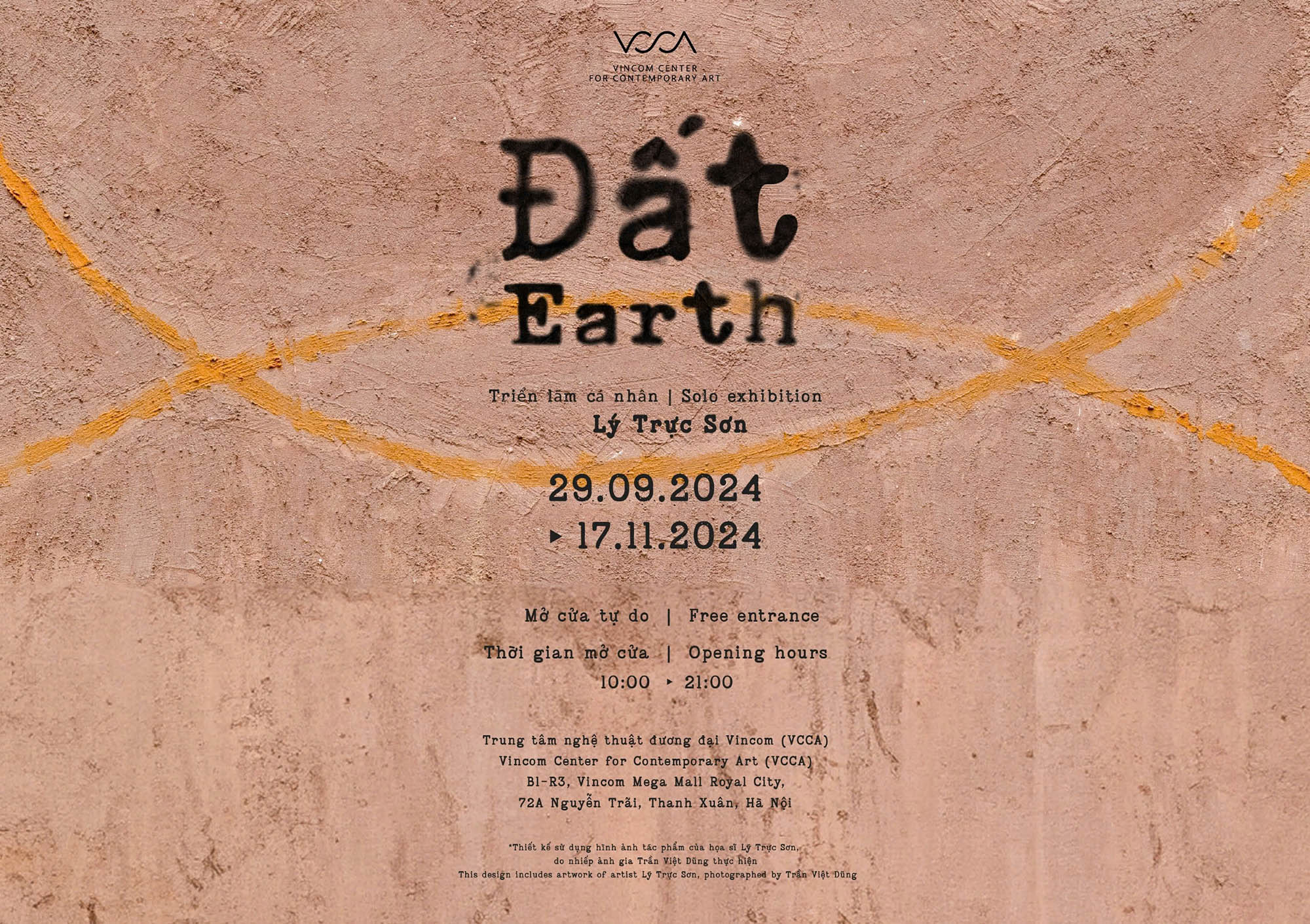
Is It EARTH or Is It MAN
Lý Trực Sơn titled this exhibition EARTH, a single word that carries layers of meanings, and of course, it is not just a material.
In the early 1980s, Lý Trực Sơn was already a towering figure in the art scene, gaining widespread fame with his Vân Dại series, which featured watercolor on dó paper. Later, after spending nearly ten years in Europe, he returned to his roots, quieter and more introspective, focusing on a meditative approach to his practice, which then led to his highly successful 2009 exhibition Chốn này, where he presented works solely made with traditional lacquer.
Lý Trực Sơn rose to fame with dó paper and lacquer, firmly associating his name with one grand theme—the rural landscape of the North. From the perspective of art history, Lý Trực Sơn, along with a few other artists, marked the onset of a renovative movement in Vietnamese art scene.
After Chốn này, Lý Trực Sơn seemed to disappear from the public eye. Rumors spread in the art world that he was deeply engrossed in experimenting with a new kind of natural pigment, made from plants, soil, and minerals—a …mysterious process.
What is fascinating about art is that it never allows us to settle comfortably; it keeps us restless, always questioning, always wanting to overturn the table, wanting to erase everything and start fresh.
Art is never truly “finished,” much like love—there’s no such thing as loving and then being done with it. After a long period of silence, Lý Trực Sơn suddenly reappeared, “descending from the mountain” with a monumental exhibition, one without dó paper or lacquer, but with non-figurative painting. No more depictions of rural life, village gates, buffaloes, black teeth, or kerchiefs... perhaps these tangible elements were distilled by Lý Trực Sơn, dreamt, hidden, and transformed into spontaneous and random symbols that now occupy 99% of his works. The rational, logical part now only accounts for 1%. But in art, that 1% is always greater than 99%. Of course, if it were only random, it would be a game, but if it is purely logical, then it would be nothing more than academic or social realism.
Without that 1% of randomness, there is no art. Art must be subjective—mistakes are allowed but must be subjective. The objective world must be viewed through the subjective eye of the artist. The logical part, no matter how it is expressed—through color, composition, brushstroke, texture, or scratching—must still emerge from a place of chance and intuition.
Returning to the idea of Lý Trực Sơn distilling the tangible reality into signs: On a background that resembles a thick, soft texture like sand or plaster, there are delicate, continuous lines, curves, circular shapes, plus (+) and minus (-) signs, ellipses, straight lines like the Hexagram of the Heaven, forms that could resemble stones, gates, or even a person (just an impression), or a few characters resembling ancient scripts…
It’s called “distillation,” but the real challenge is how to distill. Perhaps Lý Trực Sơn distilled using more than 50 years of experience—through living, through ups and downs, through comings and goings, through silence, through stillness, through direct perception, and so much more.
Lý Trực Sơn named this exhibition EARTH, a single word that carries layers of meanings, and of course, it is not just the material.
Earth, sand, pebbles... they are what they are, but they are also more than that. They are tangible, yet
also intangible. The difference between realistic and abstract painting, or between figurative and non-figurative, is time. A young person may paint a beautiful landscape with houses, rivers, and mountains, but to paint abstractly, in a minimalist style, is not so simple. How could someone do it if they have not lived enough, if they have not experienced enough to paint as if they were not painting at all?
Earth is the soil, it is the coming and going, everything originates from earth and eventually returns to it.
Behind EARTH, there must be many stories—about arrival and departure, birth and death, gain and loss, joy and sorrow, happiness and despair. These are Lý Trực Sơn’s personal stories, but also the stories of every person, the stories of human existence. On earth, there is man—and in man, there is earth.
It is with great respect that we introduce the EARTH exhibition to the art-loving community.
Lê Thiết Cương
Published in Tia Sáng, Issue 19, October 9, 2024
https://tiasang.com.vn/van-hoa/la-dat-hay-la-nguoi/

